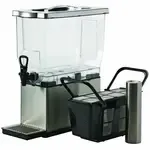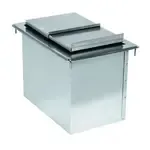
Emerging Trends in Non-Alcoholic Beverages
The non-alcoholic beverage industry has seen significant growth in recent years, with more consumers opting for sober drinks and alcohol-free alternatives. This surge in popularity, often referred to as the rise of non-alcoholic drinks, has been driven by changing consumer preferences, health-conscious lifestyles, and innovative product offerings. From mocktails to non-alcoholic spirits, the non-alcoholic beverage trends are reshaping the beverage landscape.
The Rise of Non-Alcoholic Drinks
A cultural shift toward mindful drinking has propelled the non-alcoholic trend into the spotlight. Consumers are increasingly prioritizing their health and wellness, and many are choosing to reduce or eliminate alcohol from their diets. This change is particularly evident during periods like Lent, when individuals often give up alcohol for religious or personal reasons. As a result, non-alcoholic beverage Lent essentials have become a booming category, with products catering specifically to this audience.
The growing interest in sober living and alcohol-free options isn’t just a fleeting trend. Data shows that younger generations, particularly Millennials and Gen Z, are driving this shift. They are more likely to seek beverages that align with their values, such as sustainability, health, and social responsibility. This shift has created a fertile ground for innovation in the mocktail industry and beyond.
Non-Alcoholic Beverage Trends

Several key trends are shaping the non-alcoholic beverage industry. These include:
- Premium Non-Alcoholic Spirits: Once limited to sugary soft drinks, the non-alcoholic beverage market now boasts a range of premium products, including alcohol-free gin, whiskey, and wine. Brands like Seedlip and Lyre’s have paved the way for sophisticated non-alcoholic options, catering to consumers who want the experience of drinking without the alcohol.
- Functional Beverages: Drinks that offer added health benefits, such as adaptogens, CBD, or probiotics, are gaining traction. These beverages not only serve as alcohol alternatives but also contribute to overall well-being.
- Mocktail Innovation: The mocktail industry is thriving, with bartenders and brands creating complex, flavorful recipes that rival traditional cocktails. From classic mocktails like the Virgin Mojito to more adventurous creations, these drinks are becoming a staple on bar menus.
- Sustainable Packaging: Eco-conscious consumers are demanding more sustainable options, and the non-alcoholic beverage industry is responding. Brands are investing in recyclable and biodegradable packaging to reduce their environmental impact.
- Inclusivity in Social Settings: Non-alcoholic beverages are helping to create more inclusive social environments where everyone can enjoy a drink, regardless of their alcohol preferences. This inclusivity has led to a growing number of sober bars and events.
Equipment and Bar Supplies for Serving Non-Alcoholic Beverages
To effectively serve non-alcoholic beverages, establishments need to invest in the right equipment and bar supplies. Here are some essentials:
- Glassware: High-quality glassware is crucial for presenting non-alcoholic drinks attractively. From coupe glasses for mocktails to tumblers for sparkling water, the right glass can elevate the drinking experience.
- Blenders and Juicers: Freshly squeezed juices and blended drinks are staples in the non-alcoholic trend. High-performance blenders and juicers allow bartenders to craft beverages with fresh, natural ingredients.
- Cocktail Shakers and Tools: Even without alcohol, mocktails require precision and presentation. Cocktail shakers, strainers, and muddlers are essential for creating sophisticated alcohol-free drinks.
- Garnishes and Ingredients: Stocking a variety of fresh fruits, herbs, and spices ensures that bartenders can create visually appealing and flavorful beverages.
- Refrigeration: Proper storage is essential for keeping ingredients fresh. Mini fridges, ice machines, and coolers are vital for any establishment serving non-alcoholic drinks.
- POS Systems: As non-alcoholic beverages become more prominent, having a point-of-sale system that tracks inventory and sales trends can help businesses optimize their offerings.
The Mocktail Industry’s Impact

The mocktail industry has had a significant influence on the non-alcoholic beverage market. What started as a niche offering has now become a mainstream category. Mocktails are not only appealing to those who abstain from alcohol but also to consumers seeking a healthier lifestyle. This demand has led to the rise of dedicated mocktail menus in restaurants and bars.
Moreover, the industry’s emphasis on creativity and flavor has encouraged bartenders to experiment with unique ingredients and techniques. From using exotic fruits to incorporating aromatic bitters, the art of mocktail-making has evolved into a sophisticated craft.
Alcohol-Free Beverages During Lent
Lent is a time when many people choose to abstain from alcohol as part of their observance. This seasonal abstinence has led to a surge in demand for non-alcoholic beverage Lent essentials. During this period, consumers look for alternatives that allow them to participate in social gatherings without compromising their commitments. Beverage companies often capitalize on this trend by launching special products and promotions tailored to Lent.
Challenges and Opportunities in the Non-Alcoholic Beverage Industry
While the rise of non-alcoholic drinks presents numerous opportunities, the industry also faces challenges. For instance, educating consumers about the quality and value of premium non-alcoholic products can be difficult. Many people still associate alcohol-free options with lower quality or limited flavor.
However, the industry is making strides in changing these perceptions. Through marketing campaigns, tasting events, and collaborations with top chefs and mixologists, brands are demonstrating that non-alcoholic beverages can be just as enjoyable as their alcoholic counterparts.
Additionally, the non-alcoholic trend has opened doors for innovation. Startups and established companies alike are exploring new ingredients, production methods, and packaging designs to differentiate themselves in this competitive market.
The Future of the Non-Alcoholic Trend
The non-alcoholic trend shows no signs of slowing down. As more consumers embrace sober living and mindful drinking, the demand for high-quality, innovative alcohol-free beverages will continue to grow. The industry’s focus on sustainability, inclusivity, and health aligns with broader consumer values, ensuring its relevance in the years to come.
For businesses, this trend represents a lucrative opportunity. By investing in the right equipment, training staff, and curating a diverse selection of non-alcoholic options, establishments can cater to this growing audience. Whether it’s a sophisticated mocktail at a fine-dining restaurant or a refreshing sparkling water at a casual café, the possibilities are endless.
Conclusion
The rise of non-alcoholic drinks is more than just a passing fad; it’s a reflection of evolving consumer preferences and values. From premium spirits to functional beverages, the non-alcoholic beverage industry is at the forefront of innovation and inclusivity. By staying attuned to the latest non-alcoholic beverage trends and investing in the right tools and ingredients, businesses can thrive in this dynamic market.
As the mocktail industry continues to grow, it’s clear that non-alcoholic beverages are here to stay. Whether for health reasons, religious observance, or personal choice, consumers are seeking alternatives that offer flavor, creativity, and sophistication. The future of the non-alcoholic trend is bright, and it’s an exciting time for both consumers and businesses in this space.





